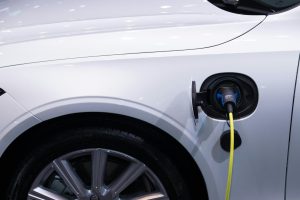Regenerative Braking: How Hybrids Convert Energy on the Go
When it comes to energy efficiency, hybrid vehicles have taken the automotive industry by storm. Combining traditional internal combustion engines with an electric motor, hybrids are able to achieve better fuel economy and reduce emissions. But have you ever wondered how these vehicles are able to convert energy on the go? This is where regenerative braking comes into play. In this article, we will explore the concept of regenerative braking and how it allows hybrids to make the most out of every braking situation.
What is Regenerative Braking?
Regenerative braking is a technology that converts kinetic energy into electricity, which can then be used to power the electric motor in hybrid vehicles. This process is typically used when the vehicle is decelerating or during braking situations. In traditional vehicles, the kinetic energy generated during braking is lost as heat, but in hybrids, it is captured and stored for later use.
How Does it Work?
When you apply the brakes in a hybrid vehicle, the electric motor switches into reverse mode, using its magnets to generate electricity. This electricity is then stored in the vehicle’s batteries, allowing it to be used to power the electric motor when needed. This process helps reduce the strain on the vehicle’s internal combustion engine, thus improving fuel efficiency and reducing emissions.
The Benefits of Regenerative Braking
One of the main benefits of regenerative braking is its ability to improve fuel economy. By capturing and reusing energy that would have otherwise been lost, hybrids are able to achieve better mileage compared to traditional gasoline-powered vehicles. This not only saves drivers money at the pump but also reduces the overall carbon footprint of the vehicle.
Another advantage of regenerative braking is its ability to extend the lifespan of the vehicle’s braking system. With traditional vehicles, the constant use of brakes can cause wear and tear on the brake pads and rotors. However, in hybrids, the use of regenerative braking means that the traditional brakes are used less often, resulting in less wear and tear and ultimately, longer-lasting brakes.
Challenges of Regenerative Braking
While regenerative braking is an innovative technology that has numerous benefits, it also comes with some challenges. One of the main challenges is the cost of implementation. Adding regenerative braking technology to a vehicle can increase its cost, making it less accessible for some consumers.
Additionally, regenerative braking also has limitations in terms of its efficiency. The amount of energy that can be captured and reused is highly dependent on the braking situation and the vehicle’s speed. This means that regenerative braking is more efficient in city driving, where there are frequent stops and starts, compared to highway driving with less braking situations.
The Future of Regenerative Braking
As the demand for more sustainable transportation options continues to increase, it is expected that regenerative braking technology will become more widespread. In the future, we may see advancements in this technology that will allow for even greater efficiency and cost savings. In fact, some electric vehicles are already using regenerative braking to further extend their driving range.
Final Thoughts
Regenerative braking is a key component of hybrid vehicles, allowing them to utilize energy that would have otherwise been lost. While there are some challenges to its implementation, the benefits of this technology in terms of fuel efficiency and sustainability make it a crucial aspect of modern-day transportation. As technology continues to advance, we can look forward to even more advancements in the world of regenerative braking.











